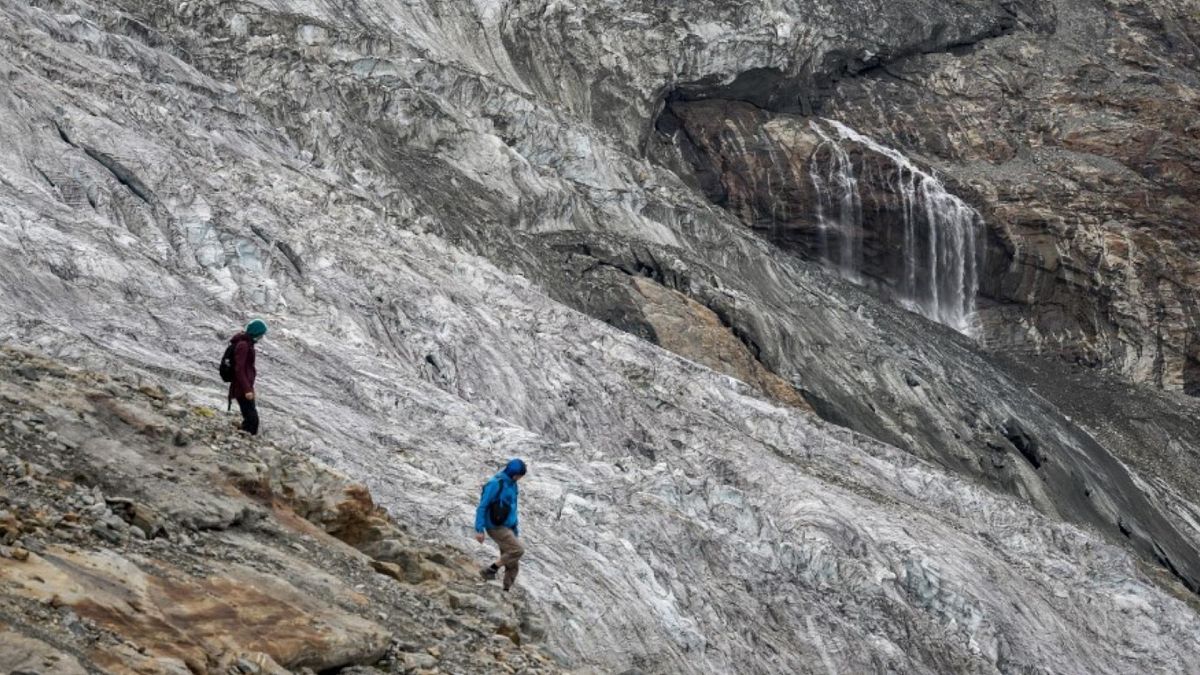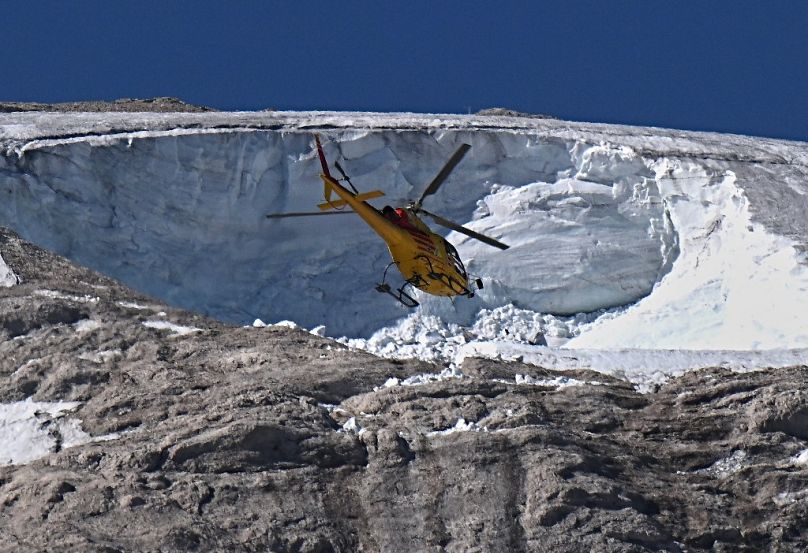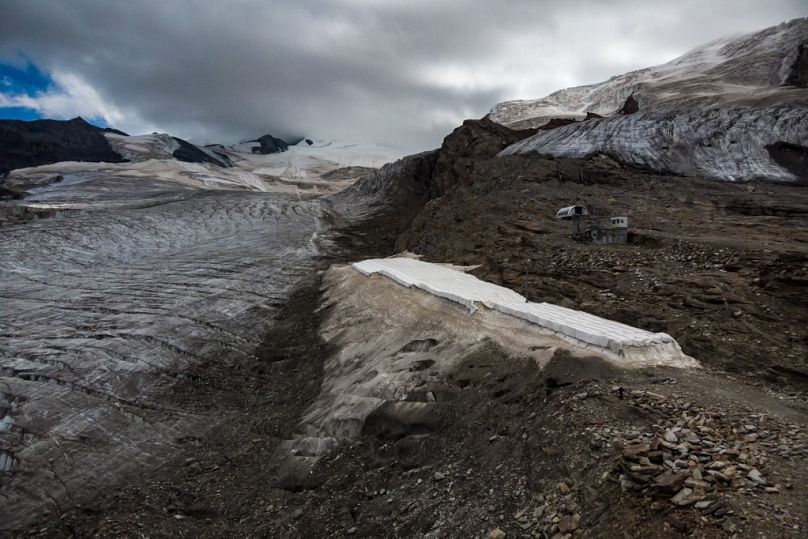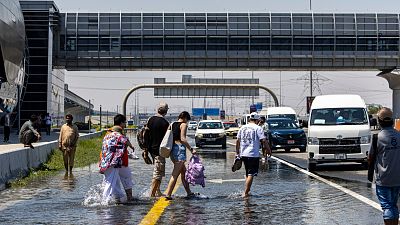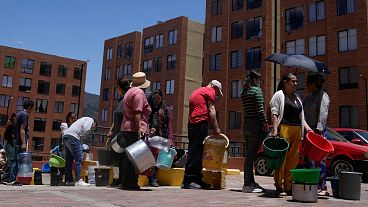Warmer temperatures are speeding up glacier melt and thawing permafrost and scientists it is being driven by climate change.
Some of the most legendary mountain routes in the Alps have become impassable this summer, as the heat wave and melting glaciers have made them too dangerous.
Every summer, hikers and tourists alike usually flock to the Alpine trails in the hope of reaching some of Europe's most beautiful peaks.
But melting glaciers and thawing permafrost, phenomena that scientists say are due to climate change, have made routes too dangerous. There have been repeated rock falls.
"Currently in the Alps, there are warnings for about ten peaks, including iconic peaks like the Matterhorn and Mont Blanc," the secretary general of the Swiss Mountain Guides Association, Pierre Mathey, told AFP.
"Normally these are closures that we see rather in August. And there they took place in late June, early July," he said.
Guides have decided not to use some routes on Mont Blanc
Guides who usually take thousands of tourists to the highest peaks in Europe each year have decided not to use certain routes to climb Mont Blanc.
A decision "not easy to take" but necessary in view of the "particularly delicate conditions of the last few weeks due to the significant rise in temperature," Guide Alpine Italiane explained on their Facebook page this week.
In Switzerland, guides have also given up the ascent of the famous Jungfrau. They advised against following the routes on the Italian and Swiss sides of the Matterhorn.
These measures are a blow after two difficult seasons marked by the COVID-19 pandemic, according to the president of the Aosta Valley Guides Association in Italy, Ezio Marlier.
"It's not easy after two almost totally empty seasons to make the decision to stop working," he told AFP.
But he laments that too many people cancel their stay while some routes remain passable.
"We have the possibility to do a lot of other things, but normally people who want Mont Blanc, they want Mont Blanc."
Glaciers are becoming dangerous
Accessig glaciers that have been melting at an accelerated rate this year also carries risks.
"The glaciers are currently in the state they usually are at the end of the summer, or even later," Andreas Linsbauer, a glaciologist at the University of Zurich, told AFP: "it is certain that we will break a record."
According to Linsbauer, this "really extreme" summer for glaciers is due to a combination of factors. Last winter's exceptionally low snowfall reduced the snow cover protecting the glaciers from the heat. And sand from the Sahara earlier in the year darkened the snow, causing it to melt more quickly.
The successive heat waves that have hit Europe since May have finally accelerated the melting of glaciers, making them unstable.
Like in Italy, where a huge block of the Marmolada glacier collapsed in July - a tragedy that killed eleven people.
The glacier had been weakened by global warming as well as by record temperatures recorded this year in Italy. It was 10°C at the top of the Marmolada the day before the disaster.
The high temperatures have accelerated its melting and water has accumulated under the ice cap, making it unstable.
The more water that melts, the more complicated the situation becomes
For Mylène Jacquemart, a glacier specialist at the Swiss Federal Institute of Technology in Zurich, there are still unknowns about the collapse of the huge block of the Marmolada glacier.
"But in general, the more the water melts, the more complicated and dangerous the situation becomes," she told AFP.
Pierre Mathey also stressed that "these pockets of water, in periods of great weather with very hot temperatures, are an additional danger, because it is not visible".
But he remains confident, believing that guides will find alternative routes: "Resilience is really the DNA of the mountain guide... and adaptability."
"It's the mountain that decides. Not the human," he said.
